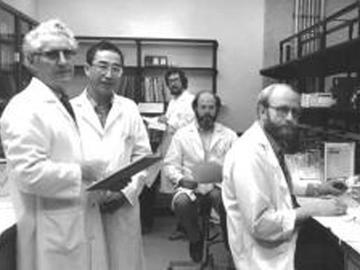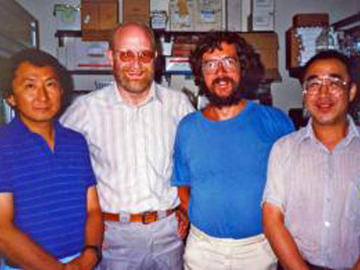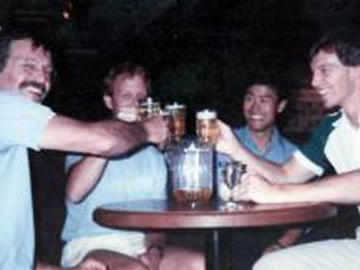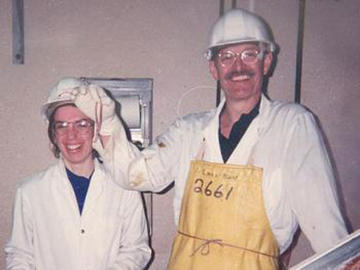
Department History
The University of Calgary gained autonomy from the University of Alberta in 1966, and formed a Faculty of Medicine the next year. Shortly thereafter operations began on the Foothills site, and this marked the creation of the Division of Medical Biochemistry, under the leadership of Dr. Robert Church who was also cross-appointed to the Department of Biology in the Faculty of Science. Drs. Tim Hawthorne and George Drummond, both cross-appointed to Chemistry, were the first pioneering leaders recruited by Dr. Church to the emerging Division. Originally, all graduate education in the Faculty of Medicine was within the single Medical Sciences program. Prior to the establishment of the Division of Medical Biochemistry in the Faculty of Medicine, biochemistry research and undergraduate teaching was housed only within the Division of Biochemistry in the Department of Chemistry within the Faculty of Science. The dichotomy of biochemical research and education that began with the formation of Division of Medical Biochemistry has continued to this day. The two groups have developed complementary areas of strength: structural and computational biology within the Faculty of Science, and molecular and cellular biology within the Faculty of Medicine. During its early years, Dr. Church was instrumental in recruiting leaders in molecular genetics, molecular and developmental biology, and cellular signaling research to the Division of Medical Biochemistry, which laid the foundation for decades to come. When the Division became a Department, in 1974, it had eight members.
In 1980, the Alberta Heritage Foundation for Medical Research came into being, providing additional opportunities to recruit talented researchers to the Faculty of Medicine and transforming it from an innovative medical school to a leader in medical research. Dr. Gordon Dixon took over leadership of the Department in 1983 and was succeeded, in 1988, by Dr. Hans van de Sande. During their tenure as Heads, the membership of the Department swelled to 27. In 1992, the Medical Sciences graduate program was devolved into seven parallel programs, one of which - Biochemistry and Molecular Biology (known as MDBC in the Faculty of Graduate Studies) - aligned with the Department. The Biochemistry and Molecular Biology graduate program has grown and flourished through the years, gaining a reputation for excellence. In 1993, Dr. Gil Schultz took over leadership of the Department and in 1998 the name was changed to the Department of Biochemistry & Molecular Biology, to reflect more accurately the breadth of research conducted. In 1999, Dr. Leon Browder became Head of the Department. Dr. Browder oversaw a large expansion of the Department, whose membership grew to 57 by 2009. Additional important growth took place in foundational infrastructure facilities during this time, including the establishment of mass spectrometry, microarray and bioinformatic/genomic core facilities. In 2009, Dr. Jonathan Lytton became Head of the Department.





